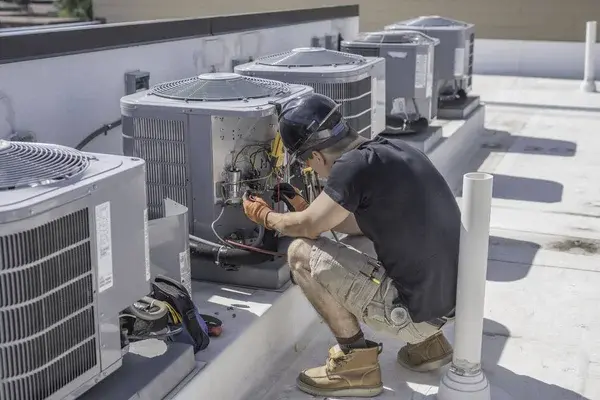
Customers may not consciously evaluate HVAC efficiency or door hardware when entering a store, but they always notice signage and lighting. The impact is measurable. A study from FedEx found that 76 percent of customers entered a store they had never visited before based on its signs, and 68 percent said they made a purchase because of that sign. NACS data reinforces this connection, reporting that 82 percent of customers say store design and upkeep influence their decision to enter a convenience store.
Lighting plays an equally powerful role. A report from the International Council of Shopping Centers found that well-lit environments increase dwell time by 16 percent and improve perception of product quality. For convenience and retail specifically, poor exterior lighting has been linked to lower evening traffic, while upgraded LED installations have shown to improve nighttime sales and reduce liability incidents.
These figures demonstrate that signage and lighting are not just cost centers. They are frontline sales drivers.
The Pain Points Facilities Directors Face
Despite their importance, signage and lighting often slip into the “defer until broken” category of budgets. This creates significant risks and hidden costs:
- Deferred maintenance. Outages, flickering signs, or inconsistent branding reduce trust. Customers interpret poor signage as poor operations. More than 60 percent of businesses report a 10 percent increase in sales after updating signage, proving how quickly neglect erodes opportunity.
- Energy inefficiency. Older fluorescent or metal halide fixtures consume up to 70 percent more energy than LED systems, while requiring more frequent replacements. Energy costs for convenience stores alone rose 16 percent in 2022 and another 6.4 percent in 2023. Without retrofits, stores absorb these increases directly.
- Slow rollouts. Multi-location signage or menu board upgrades are often managed by fragmented vendors. This creates long lead times and inconsistent execution. In one national rollout, stores saw a 90-day difference in signage quality across markets, undermining the uniformity of the brand.
- Safety risks. Poor exterior lighting increases liability exposure and drives away evening shoppers. Research from the Lighting Research Center shows that well-lit parking lots increase customer perceptions of safety by over 25 percent, which directly correlates with higher nighttime sales.
Data That Connects Facilities to Revenue
Facilities directors can strengthen their case by showing how signage and lighting improvements connect directly to the P&L.
- A retail study by the University of Cincinnati found that 34 percent of shoppers associate sign quality with store quality. This means every neglected sign directly influences perception of the brand itself.
- Digital signage has been shown to lift sales by 3 to 5 percent in grocery and quick service environments by promoting high-margin items like prepared foods and beverages.
- LED retrofits have an average payback period of fewer than two years, driven by reduced energy spend and longer life cycles. One retailer reported saving $300 per location per month in energy and maintenance after a national LED conversion.
- Retailers who upgraded lighting reported measurable sales lifts of 6 to 12 percent in key categories, proving that atmosphere influences shopping behavior as much as pricing or promotions.
From Expense to Investment
The challenge for facilities directors is to shift the perception of signage and lighting from “necessary expenses” to “strategic investments.” When CFOs see them as costs, upgrades are delayed. When leadership understands that poor signage means fewer customers walking through the door, the calculus changes.
Directors can build that case by:
- Tracking asset condition across the portfolio. Data on outages, failures, and repair spend can be tied to store performance.
- Measuring lifecycle costs. Comparing ongoing repair costs of outdated fixtures to the ROI of LED conversions shows clear financial benefit.
- Overlaying sales performance. Correlating poor signage or lighting conditions with traffic and revenue data demonstrates the direct impact on customers.
The Strategic Role of Facilities Leaders
Facilities directors are not only responsible for keeping assets running. They are protectors of brand equity and enablers of sales. Signage and lighting are prime examples of facilities assets where decisions about repair, maintenance, and upgrades directly shape customer perception.
Every time a preventive lighting program catches an outage before customers notice, it protects the brand promise. Every time a signage refresh is rolled out consistently across a portfolio, it strengthens the company’s ability to win loyalty and traffic. Facilities leaders who connect these outcomes to revenue gain credibility as strategic contributors to growth.
The Bottom Line
The industry is under pressure from rising costs and thin margins. Cutting signage and lighting spend may seem convenient, but the data shows it is short-sighted. Customers choose where to shop based on what they see and how they feel, and facilities leaders control both.
By treating signage and lighting as revenue-generating assets, directors can deliver a stronger brand presence, reduce long-term energy and repair costs, and drive measurable sales growth. What looks like a maintenance decision is, in reality, one of the most powerful growth levers available to a retail or convenience brand.
Let’s talk.
Get in touch and fill out the contact form below!




